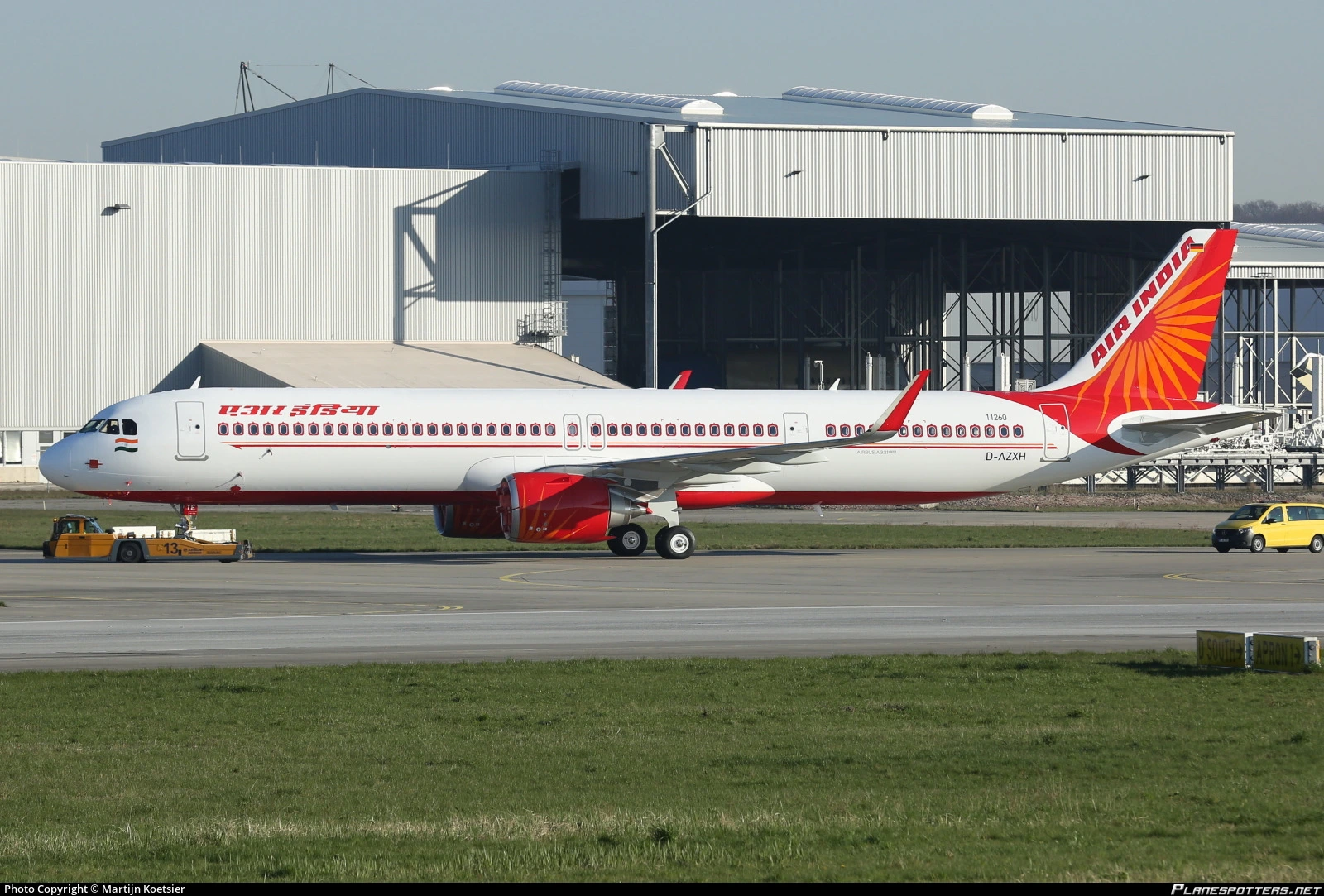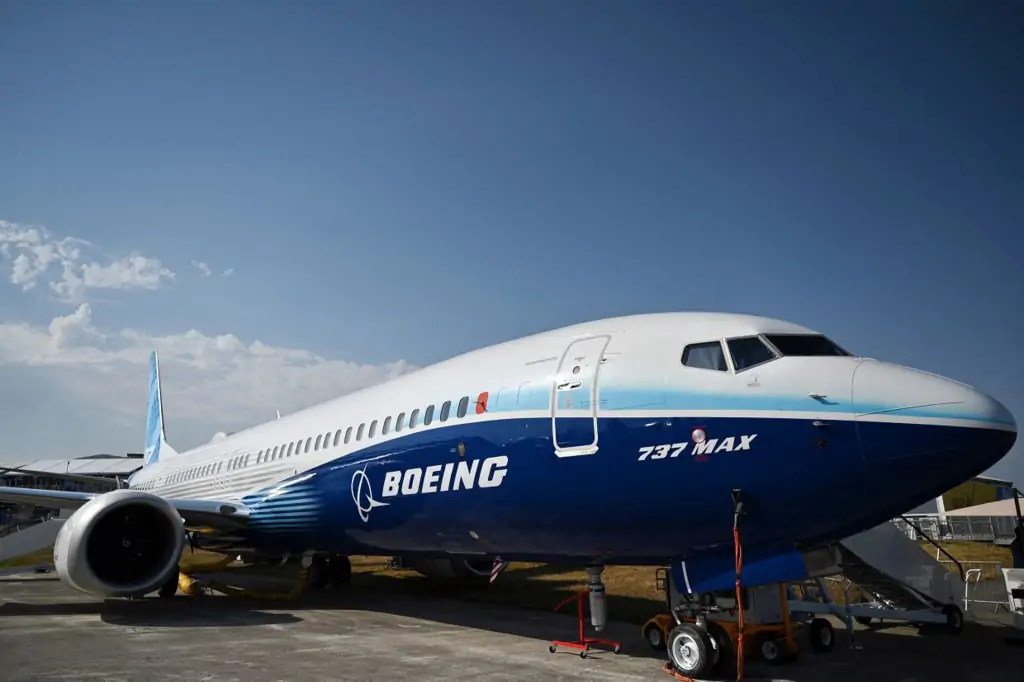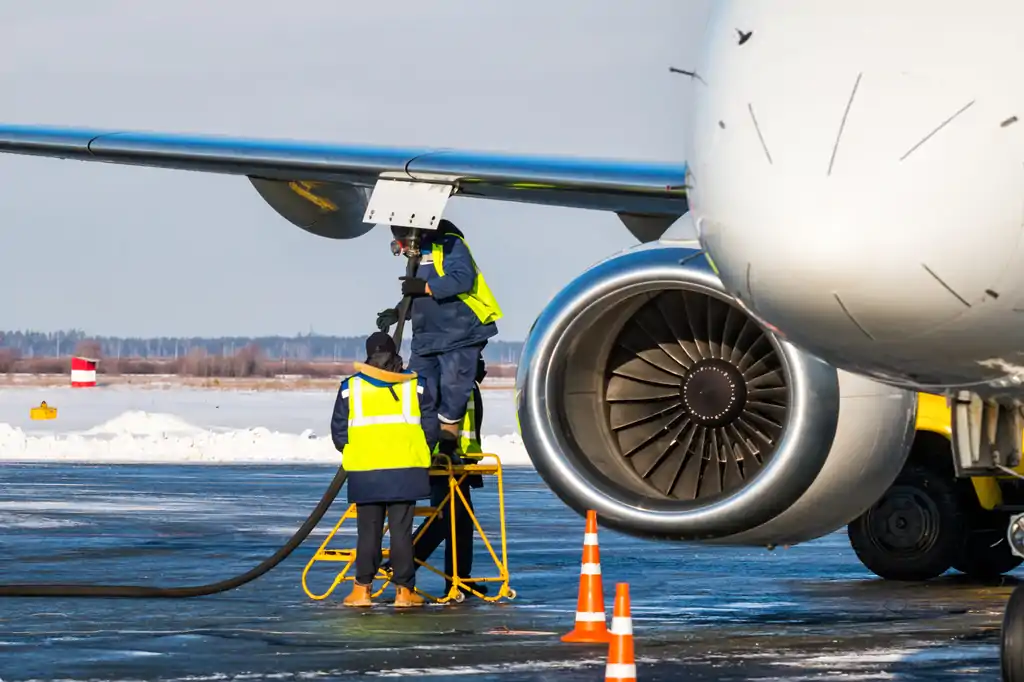Air India Slapped with Another Fine, this Time for Wheelchair-Related Death
Preet Palash
01 Mar 2024

The aviation regulator DGCA has slapped a fine of Rs 30 lakh on Air India for failing to provide an elderly passenger, with a wheelchair he had booked in advance.
The 80-year-old passenger died after landing in Mumbai as he walked out of the terminal with only one wheelchair in which his wife was sitting.
DGCA said it had issued the airline with a Show Cause Notice for not complying with the provisions of its regulations about “Carriage by Air - Persons with Disability (Divyangjan) and/or Persons with Reduced Mobility” which is a violation of Aircraft Rules, 1937.
Air India submitted its response on 20th February 2024 vide which the airline informed that the elderly passenger wished to walk along with his wife who was on a wheelchair too, rather than wait for another wheelchair.
However, the airline failed to show compliance of the CAR as the airline did not provide any wheelchair to the elderly passenger. Further, Air India did not inform about any action taken by the airline against the erring employee(s) and the airline also failed to submit any corrective actions taken to prevent the recurrence of such incidents in the future, the regulator said.
Accordingly, a financial penalty of Rs. 30 lakh has been imposed on Air India as per Aircraft Rules, 1937 for violating the provisions of the aforementioned CAR.
An advisory has also been issued to all airlines to ensure that an adequate number of wheelchairs are available for passengers who require assistance during embarking or disembarking from the aircraft during their journey.
Read next
Leonardo Appoints Universal Vulkaan Aviation to Push India Helicopter Sales
Preet Palash
01 Mar 2024

Leonardo, the manufacturer of rotary-wing aircraft, has appointed Universal Vulkaan Aviation Pte. Limited as its distributor for the Indian civil helicopter market
The helicopter models available through this partnership in India will include AW109, AW139, AW169.
The announcement was made at the HAI Heli-Expo in California.
Stefano Villanti, SVP Sales and Marketing at Leonardo Helicopters said, “We are delighted to be entering this partnership with Universal Vulkaan Aviation Pte. Limited. With India's booming civil aviation market and the increasing demand for reliable transportation solutions, we believe that our state-of-the-art helicopters are uniquely suited to meet this demand. Our partnership with Universal Vulkaan Aviation Pte. Limited will enable us to deliver innovative solutions that address the unique needs of the Indian market and provide customers with unparalleled service and support.”
“Helicopters have become an increasingly popular mode of transportation for business travel and tourism, including religious tourism, offering unparalleled convenience and flexibility. As part of our partnership with Leonardo, we are excited to bring their exceptional products to the Indian market. As a leading provider of aviation solutions in India, we are committed to delivering innovative solutions with the highest safety standards that meet the unique needs of our customers. We believe that the combination of Leonardo's cutting-edge technology and our expertise in the Indian aviation industry will create new opportunities for growth and innovation. We look forward to delivering world-class solutions to our customers," said Harinder “Billa” Commar of Universal Vulkaan Aviation Pte. Limited.
The helicopters available through this partnership in India are equipped with advanced technology, superior performance, and safety features. They offer spacious cabins, exceptional range capabilities, and cutting-edge avionics systems, making them ideal for a wide range of applications including corporate travel, tourism, and emergency medical services, the firm said.
Read next
Bengaluru's Kempegowda International Airport Bengaluru conducted its 10th biennial full-scale aircraft emergency exercise, Challenger ’24, on Thursday.
The exercise, aimed at testing and validating the airport's emergency plans and preparedness, involved a multitude of stakeholders. Over 2,000 participants from more than 85 organisations participated in the full-scale emergency exercise, which commenced at 1242 hrs, the airport said in a statement.
The Challenger ’24 drill simulated a scenario involving the crash landing of Challenger Flight number XX-9999.
Challenger ’24, organised under the aegis of the Directorate General of Civil Aviation (DGCA) Govt of India, was attended by all domestic and international airlines, ground handling agencies, city hospitals, Indian Air Force (IAF), Police, Traffic Police, Air Traffic Services (ATS), Fire and Emergency Services, local communities and civil society organisations, aviation institutions and District Administration authorities.
The mock exercise scenario involved a realistic simulation, replete with an actual aircraft and 162 dummy passengers actively participating in the exercise. The exercise commenced with the simulation of a passenger aircraft catching fire during final approach for landing. The fire was promptly extinguished by the Airport’s Airport Rescue and Fire Fighting (ARFF) team, which is equipped with the most advanced firefighting systems with support from the IAF and KSFES firefighting teams. The ARFF team along with CISF carried out the rescue operation and those requiring hospitalisation were swiftly transported to city hospitals under pre-existing Memorandums of Understanding (MoUs) with the Airport.
A green corridor was established towards the city to assess readiness, and a real-time airlifting drill was conducted. Helicopters from IAF too participated in the evacuation drill for critical casualty transportation to the IAF command hospital. More than 45 observers from various agencies belonging to different countries were deployed to evaluate the response and readiness of the Airport and its stakeholders.
Additionally, the deployment of the emergency call centre and toll-free number facilitated efficient communication and assistance for individuals seeking information and support during the simulated emergency scenario. The support centres for media management, passenger and family care, and reunification also played a crucial role in providing essential services and compassionate assistance to those affected by the mock emergency.
Hari Marar, MD and CEO of Bangalore International Airport Limited (BIAL), stated, "We undertake this significant full-scale drill biennially, engaging all stakeholders. The purpose of orchestrating this real-time simulated mock exercise is two-fold: firstly, to assess the effectiveness of our procedures and the readiness of our personnel in swiftly mitigating the impact of real emergencies; and secondly, to prioritise the preservation of lives and property. It's imperative that we achieve these goals while ensuring no disruption to flight schedules. I extend my gratitude to all internal and external stakeholders for making this possible. Such exercises provide opportunities for testing our capabilities, learning, and enhancing our crisis preparedness.”
Going forward, the airport will conduct a comprehensive debriefing and evaluation of the mock drill exercise to capture key learnings, recommendations, and areas for enhancement. These insights will be used to refine and strengthen emergency response protocols, communication frameworks, and collaboration among stakeholders, the airport added.
Read next
As the world adjusts to the ever-changing landscape of energy consumption, China stands as a focal point, showcasing both the resilience and evolution of its fuel demands. Amidst a backdrop of recovering international travel and advancing electric vehicle technology, China's energy sector is a stage where various forces intersect, shaping the trajectory of its fuel consumption. In this article, we delve into the forecasts provided by the research arm of China National Petroleum Corp (CNPC), shedding light on the intricate balance between aviation fuel expansion, crude oil imports, and the broader energy landscape.
Rising Above: Aviation Fuel Consumption
Charting the Course for Passenger Travel
In a testament to the resilience of the aviation industry, China's aviation fuel consumption is poised to surge by 13.1% this year, fueled by a resurgence in passenger travel. The forecast, as outlined by CNPC's Economic & Technology Research Institute (ETRI), paints a picture of soaring demand, with consumption expected to reach 39.3 million metric tons in 2024. This growth trajectory is propelled by the gradual recovery of international air travel post-COVID, albeit still below pre-pandemic levels. With international traffic hovering around 53% of its pre-COVID figures, the outlook for kerosene demand remains optimistic, signaling a period of post-epidemic recovery and rapid growth.
Looking Ahead: Kerosene's Ascension
Beyond the Pandemic: A Glimpse into Future Demand
As China's international air travel rebounds and per capita incomes rise, the trajectory of kerosene demand points towards a steady ascent. According to ETRI figures, kerosene demand is projected to reach 54 million tons by 2030, peaking in 2040. The confluence of rising incomes and improved air transportation infrastructure lays the foundation for sustained growth in kerosene consumption, underscoring its pivotal role in facilitating air travel across the nation.
Navigating Challenges: Diesel and Gasoline Dynamics
Economic Pressures and Electric Dreams
While the skies may be clear for aviation fuel, economic pressures weigh heavily on the demand for diesel, particularly in the logistics and construction sectors. CNPC anticipates a 2.8% decline in diesel consumption this year, highlighting the impact of broader economic trends on fuel demand. Conversely, gasoline consumption is forecasted to grow by 1.3%, albeit with a looming peak on the horizon. Analysts predict a plateau in gasoline demand between 2024 and 2025, fueled by the rapid adoption of electric vehicles (EVs). With EV sales projected to account for 40% of total auto sales this year, the automotive landscape is undergoing a transformative shift, reshaping the dynamics of gasoline consumption.
Charting the Course: Crude Oil Imports and Refinery Throughput
Stagnant Seas and Record Throughputs
In contrast to the buoyant outlook for aviation fuel, crude oil imports are expected to remain relatively flat, with a marginal 0.1% increase forecasted for 2024. Despite this, national crude oil throughput is set to reach a record high of 752 million tons, driven by a 1.8% growth rate. However, this growth comes alongside a slight dip in refinery utilization rates, underscoring the need for efficiency optimization within China's refining sector.
Gazing Towards the Horizon: Natural Gas and LNG Imports
Fueling the Future with Natural Gas
As the world embraces cleaner energy alternatives, natural gas demand in China is poised for robust growth, with a forecasted increase of 6.1% in 2024. Imports are expected to play a significant role in meeting this demand, accounting for 43.1% of total consumption. Despite a surge in LNG port receiving capacity, LNG imports are projected to experience a slight dip from the previous year's record, underscoring the nuances within China's evolving energy landscape.
Conclusion
In navigating the complexities of China's fuel forecast, one thing remains clear: the energy landscape is undergoing a profound transformation. From the soaring skies of aviation fuel demand to the stagnant seas of crude oil imports, each facet of China's energy sector reflects a delicate balance between tradition and innovation. As the nation charts its course towards a greener, more sustainable future, the dynamics of fuel consumption serve as a compass, guiding the way forward amidst a sea of change.
With Inputs from Reuters
Read next
The aviation industry is once again in the spotlight as Allegiant Air, a low-cost carrier based in Las Vegas, finds itself grappling with delays in aircraft deliveries from Boeing. This setback comes in the wake of a harrowing incident involving a cabin panel tearing off a Boeing 737 MAX 9 mid-flight, prompting concerns about safety procedures and production capabilities at the aerospace giant.
Delays in Deliveries
Allegiant, which had anticipated receiving 24 MAX planes from Boeing in 2024, is now revising its expectations downward, with only approximately half of the originally planned deliveries expected to materialize this year. Allegiant President Greg Anderson revealed in an interview that the airline is in constant communication with Boeing, emphasizing the need for an orderly delivery schedule to manage through the disruptions.
Industry Ramifications & Reactivation of Older Aircraft
The repercussions of Boeing's production constraints extend beyond Allegiant, affecting other carriers like Southwest Airlines and United Airlines. Ryanair, a European carrier, has hinted at potential flight removals from its summer schedule due to Boeing's delivery delays, highlighting the global impact of the aerospace giant's challenges.
To mitigate capacity constraints stemming from delayed MAX deliveries, Allegiant has opted to reactivate some of its older Airbus A320s, which were slated for retirement. This strategic move aims to ensure minimal disruption to the airline's operations, particularly during the peak summer flying season.
Safety Concerns and Quality Assurance
The recent incident involving a cabin panel detachment has prompted heightened scrutiny of Boeing's safety protocols. The head of the U.S. Federal Aviation Administration (FAA) has called for a comprehensive action plan from the planemaker to address systemic quality-control issues within a 90-day timeframe. Allegiant, meanwhile, is bolstering its quality assurance measures by leveraging its internal expertise and collaborating with Lufthansa Technik to uphold stringent safety standards.
Navigating Uncertain Skies
While Allegiant remains optimistic about the long-term prospects of its partnership with Boeing, the current challenges underscore the importance of resilience and adaptability in the aviation industry. As stakeholders await Boeing's remedial actions and production updates, carriers like Allegiant are forced to reassess their fleet strategies and contingency plans to navigate the turbulence ahead.
Conclusion
The turbulence facing Allegiant and its counterparts underscores the delicate balance between safety, reliability, and operational efficiency in the aviation sector. As Boeing works to address its production woes and restore confidence in its aircraft, airlines must remain vigilant and agile in managing disruptions while prioritizing passenger safety above all else.
By staying attuned to industry developments and proactively addressing challenges, Allegiant and its peers can weather the storm and emerge stronger in the evolving landscape of commercial aviation.
With Inputs from Reuters
Read next
Boeing Faces Pressure to Overhaul Quality Control After FAA Demands Action
Abhishek Nayar
01 Mar 2024

Boeing, the renowned aircraft manufacturer, finds itself under intense scrutiny once again as the U.S. Federal Aviation Administration (FAA) demands a comprehensive plan to address systemic quality-control issues within a tight 90-day deadline. This directive comes in the wake of a recent mid-air emergency involving an Alaska Airlines 737 MAX 9, raising renewed concerns over safety protocols and manufacturing standards at Boeing.
FAA's Ultimatum & Boeing's Response
FAA Administrator Mike Whitaker minced no words in his demand for Boeing to undertake "real and profound improvements" to its quality-control processes. Highlighting the necessity for foundational change, Whitaker emphasized the need for Boeing's leadership to commit to a sustained effort, with clear milestones and expectations laid out.
Boeing's CEO, Dave Calhoun, expressed the company's unwavering commitment to address the FAA's concerns and develop a comprehensive action plan. Acknowledging the gravity of the situation, Calhoun affirmed Boeing's understanding of the required changes and pledged to deliver a plan with measurable criteria demonstrating profound transformation.
Root of the Crisis & Legal Ramifications
The crisis emerged when a door panel detached during a flight on a brand-new Alaska Airlines 737 MAX 9, compelling pilots to execute an emergency landing. Passengers were exposed to a perilous situation, highlighting critical lapses in safety measures. This incident, coupled with previous fatal crashes involving Boeing aircraft, has cast a shadow over the company's reputation.
The Justice Department's scrutiny of the Alaska Airlines MAX 9 blowout underlines the potential legal repercussions for Boeing. If found to be in breach of a deferred-prosecution agreement stemming from previous crashes, Boeing could face criminal liability, further intensifying the pressure on the company to rectify its shortcomings.
Internal Critique & FAA's Expectations
An expert review panel report commissioned by Boeing in early 2023 delivered scathing criticism of the company's safety management processes. The report highlighted deficiencies in implementing a positive safety culture, indicating a pressing need for systemic change within the organization.
The FAA's directive extends beyond mere procedural adjustments; it necessitates a fundamental shift in Boeing's approach to quality control. Emphasizing the incorporation of forthcoming audit results and expert panel findings, the FAA underscores the need for a holistic overhaul encompassing both Safety Management Systems and Quality Management Systems.
Challenges Ahead & Industry Perspectives
Boeing faces a daunting task ahead as it grapples with the multifaceted challenges of enhancing safety protocols, restoring public trust, and navigating potential legal ramifications. The company must embark on a comprehensive review of its quality-control processes to ensure that safety remains its paramount concern.
The aerospace industry is closely monitoring Boeing's response to the crisis, with stakeholders expressing frustration over the company's quality control lapses. Airbus, Boeing's main competitor, has maintained its dominance in the market, further underscoring the urgency for Boeing to address its internal challenges.
Conclusion
Boeing stands at a critical juncture, compelled to undertake a thorough overhaul of its quality-control processes in response to the FAA's ultimatum. The company's ability to effectuate meaningful change will not only determine its future trajectory but also shape the broader landscape of aviation safety and regulation. As Boeing navigates this challenging period, its commitment to fostering a culture of safety and accountability will be paramount in rebuilding trust and safeguarding the integrity of its aircraft.
With Inputs from Reuters





Comment